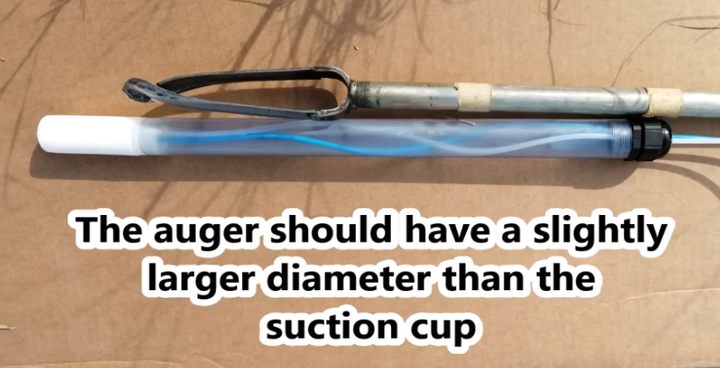How to install soil suction cups

The post was last updated on 2022-02-16.
Recently, we have been to one of the study sites where I did research for my PhD. The weather was warm and it stayed dry and independent of this it is simply a nice place to be. It is located in Northern Germany close to the sea featuring the soil type Kalkmarsch (WRB: Calcaric Gleysol). A collegeau of mine needed to obtain soil solution for his project and therefore we installed soil suction cups. It is the first time for me to install these devices. If you consider to employ them for your studies I recommend an into depth article about the prerequisites and shortcomings by applying suction cups from Lutz Weihermüller (in Field measurements Methods in Soil Science, 2019).

Polder Speicherkoog in Northern Germany
The term soil solution features natural dissolved organic carbon (DOC) and a multitude of elements and is the preferred term over soil water
Here is a little trailer of my working procedure.
Overall, it is a straight forward procedure and it took me 2-3 hours to install the cups. I applied a vacuum of -0.4 bar and the bottles filled over night with about 500 mL of soil solution. If you work in substrates that are highly dense and feature elevated clay contents and/or the pores are not water saturated it will take way longer and you will obtain less soil solution ☝ . In our case we wanted to analyze redox sensitive species of reduced iron (Fe2+) and manganese (Mn2+) so we needed to make sure that we work in a special atmosphere. Therefore, my collegeau Constantin flushed the bottles with Argon gas to replace oxygen within the bottles. Besides this it is recommended to stabilize your solution (e.g. with diluted HNO3) to avoid a precipitation reaction of your elements from soil solution over time. When working with redox sensitive elements you better be quick because O2 is everywhere 🚅
Argon is more dense with 1,78 kg m−3 and replaces the less dense oxygen with 1,34 kg m-3
At best, your suction cups should stay within the soil for a couple of weeks. Thereby, the porous tip can equilibrate with the solute concentration around the tip. In addition, if the study site is drier (which is not the case at our site with surface-near water tables) it is advisable to wet the porous plastic tip in advance and make sure to fill a soil slurry in the depth where the tip of the suction cups is installed. This is important to ensure a good hydraulic contact between the soil matrix and the porous tip.
Our field deployment had some training character to test a method and therefore we will go there again in a couple of weeks to get proper data. Overall, it felt really good to work outside in the field again and get the hands dirty after spending a lot of time at the desk 💻 Hopefully vaccination will progress to get rid of Covid-19 💉